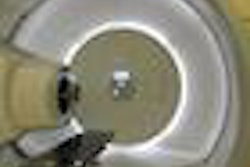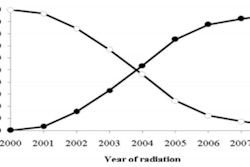Proton beam therapy shows promise as a radiotherapy treatment for cancer, but more robust prospective trials are needed to determine the appropriate clinical setting for its use, according to an American Society for Radiation Oncology (ASTRO) task force.
The Proton Task Force of ASTRO's Emerging Technology Committee reported its assessment of peer-reviewed evidence, and the results were published online March 9 in Radiotherapy and Oncology.
The review, which included evidence collected up to November 2009, focused specifically on the use of proton beam therapy to treat central nervous system (CNS) malignancies, head and neck cancer, gastrointestinal malignancies, lung cancer, ocular melanoma, pediatric malignancies, and prostate cancer.
Current data are not available to provide sufficient evidence to recommend proton beam therapy outside clinical trials in head and neck cancer, gastrointestinal malignancies with the exception of hepatocellular carcinoma, lung cancer, and pediatric non-CNS malignancies, according to the task force.
Dr. Aaron Allen, of the Davidoff Center at Tel Aviv University in Israel, and fellow task force members reported that proton beam therapy's ability to significantly limit low-dose radiation beyond the target volume, thereby reducing the risk to normal tissues, could potentially benefit children. They noted that brain tumors account for more than half of pediatric solid tumors, and the rationale was compelling for using the treatment for posterior fossa tumors, optic pathway tumors, and brainstem lesions.
Conformal proton therapy is used more often for prostate cancer than for any other disease site. However, despite the popularity of its use and its potential to prevent secondary malignancies, no clear benefit over photon-based intensity-modulated radiation therapy (IMRT) has been demonstrated.
Proton beam therapy has unique advantages in sparing lung volumes from receiving low-dose irradiation from exiting photon beams when administered to patients with stage III or more advanced lung cancers. It may entirely spare contralateral lung volume, the authors noted.
It's important to realize that the use of this therapy requires significantly more work in treatment planning and dose verification, they added. Organ motion is critical and adds an additional challenge.
Proton beam therapy has been effective in treating large ocular melanomas not approachable via brachytherapy. However, for approachable tumors, both treatments are effective.
The Proton Task Force recommended that more prospective clinical trials be performed.



















